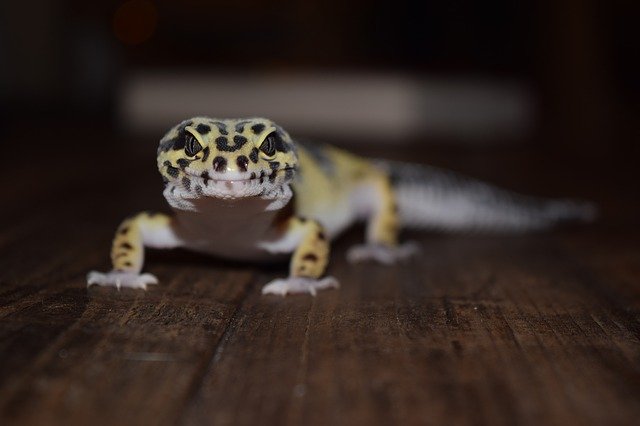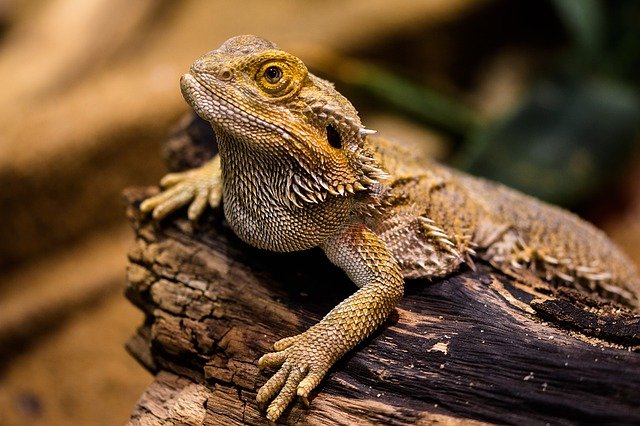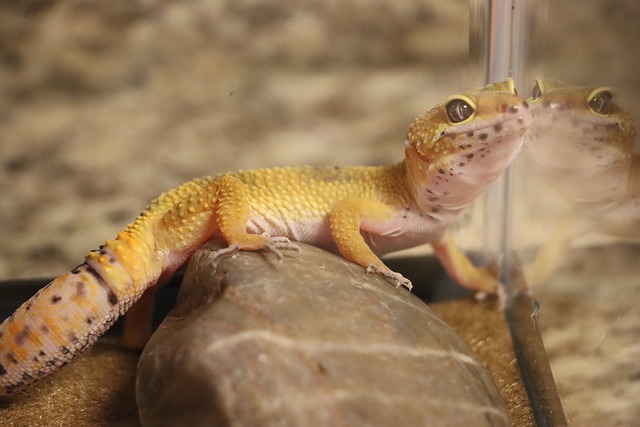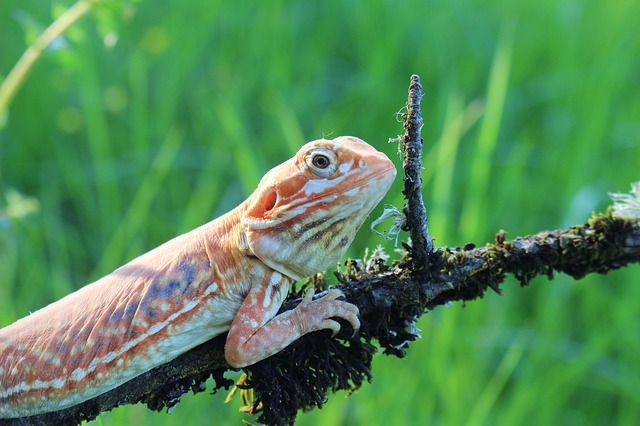Bearded Dragon Vs Leopard Gecko
May 10, 2021

Bearded Dragon Vs Leopard Gecko: Which is Best for You?
So you’ve decided you want a lizard, but you’re having trouble deciding between a bearded dragon or leopard gecko. It's understandable to be conflicted — it's a big decision, especially if it's your first lizard. The good news is, both bearded dragons and leopard geckos make excellent pets for both beginners and experienced reptile keepers. They each have their own pros and cons that we will go over together to help you decide which lizard is the right lizard for you!
Size and Lifespan
Bearded Dragons: Don’t let the baby bearded dragons that you see in the pet stores fool you! These guys may start out small, but they quickly grow to be medium sized lizards averaging between 15 - 24 inches long. Before committing to owning a bearded dragon, it's important to keep in mind that they can live to be between 5 and 10 years old. These lizards are diurnal, meaning they are most active during the day, which can be a huge plus. Bearded dragons are very docile lizards that are easy to handle, and oftentimes can be seen perched on their owners’ shoulders. On top of that, many bearded dragon owners will purchase harnesses for their lizard so they can take them outside on walks!
Leopard Geckos: Leopard geckos are smaller lizards than bearded dragons, growing to be between 7 - 10 inches long, so if a bearded dragon’s size intimidates you, a leopard gecko may be a better match. Leopard geckos generally live to be between 15 and 20 years old, and some even live past that! They are also a very docile and easily handled species of lizard. Leopard geckos also come in a huge variety of morphs (colors and patterns) so be sure to check out all of your options before settling on one.

Diet
Bearded Dragons: Bearded dragons are omnivores, meaning they eat fruits, vegetables, and insects. This means that on top of providing your bearded dragon with a wide variety of staple feeder insects, you will also need to provide them with a salad daily. It is important to supply them with a variety of insects, not just one kind, to avoid obesity, organ failure, and vitamin deficiency. I have an article that breaks down exactly how to give your bearded dragon a balanced diet here.
Leopard Geckos: Leopard geckos are insectivores, meaning they only eat bugs. This can be convenient if you don’t have the time to make a salad for your lizard every day. Like bearded dragons, they will require a variety of insects and not just one kind, as limiting leopard geckos to only one kind of insect can cause health issues. I have an in depth article on choosing the best feeder insects for your reptile here.

Enclosures, Heating, Humidity, and Lighting
Both bearded dragons and leopard geckos will require a proper sized enclosure, as well as a heat lamp, UVB lighting, and two thermometers to accurately measure the temperature and humidity on both sides of their enclosure. Both bearded dragons and leopard geckos have low humidity requirements. Both of their tanks should have humidity levels between 30% - 40%.
Bearded Dragons: Bearded dragons are large lizards, and therefore they require large enclosures. Ideally, an adult bearded dragon’s enclosure should be 48 inches X 24 inches X 24 inches. They are cold blooded creatures, meaning they cannot regulate their own temperatures, and will need you to do so. You can do this by providing them with a heat lamp. It is essential to provide your bearded dragon with UVB lighting. Without it, they can develop metabolic bone disease, which will oftentimes cause bone deformities, and can sometimes even lead to death.
Leopard Geckos: Since leopard geckos are smaller than bearded dragons, they can live in a smaller enclosure. You should provide your leopard gecko with an enclosure that is at least 36 inches X 18 inches X 18 inches. Leopard geckos are also cold blooded creatures that should also be provided with both a heat lamp to stay warm, and a UVB light to prevent metabolic bone disease.

Bearded Dragons
Pros:
- Calm species that is easy to handle
- Adventurous — you can put them on a leash and take them outside
- Readily available in stores and online
- Most active during the day
Cons:
- Requires a large enclosure
- Higher maintenance because of their need for a daily salad
- Can be picky eaters
- Limited variety of colors and patterns to choose from
If you are interested in adopting a bearded dragon, be sure to read my Bearded Dragon Care Sheet to learn all you need to know about bearded dragon care.
Leopard Geckos
Pros:
- Small and easy to handle
- Only eats insects
- Live a long life
- Readily available both in stores and online
- Have a huge variety of colors and patterns to choose from
Cons:
- Mostly active at sunset, and not during the day
If you are interested in adding a leopard gecko to your family, be sure to read my Leopard Gecko Care Sheet to learn all you need to know about leopard gecko care.
Recommended Posts

Bearded Dragon Health Issues

Ultimate Bearded Dragon Care Sheet

The Complete Leopard Gecko Care Sheet




Sending...